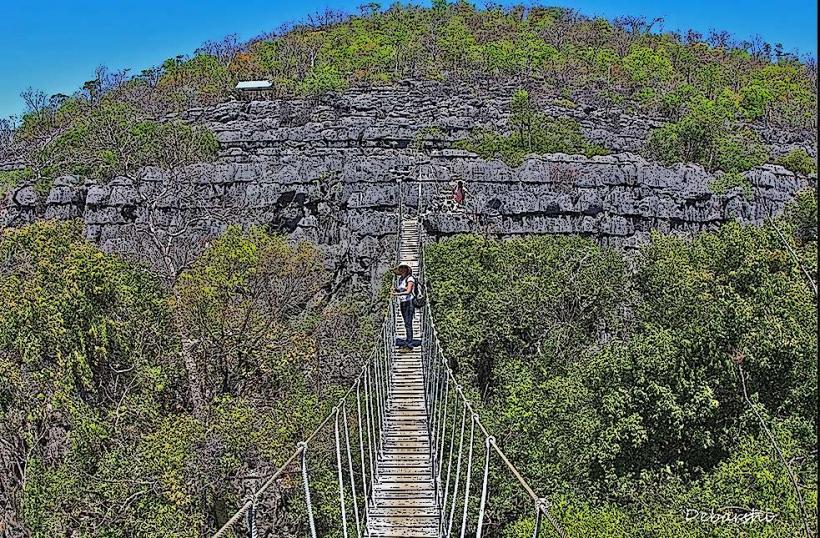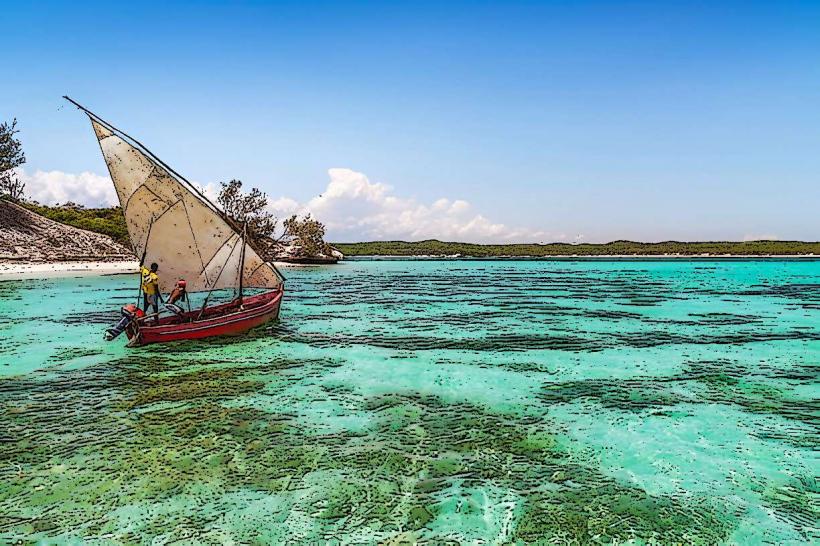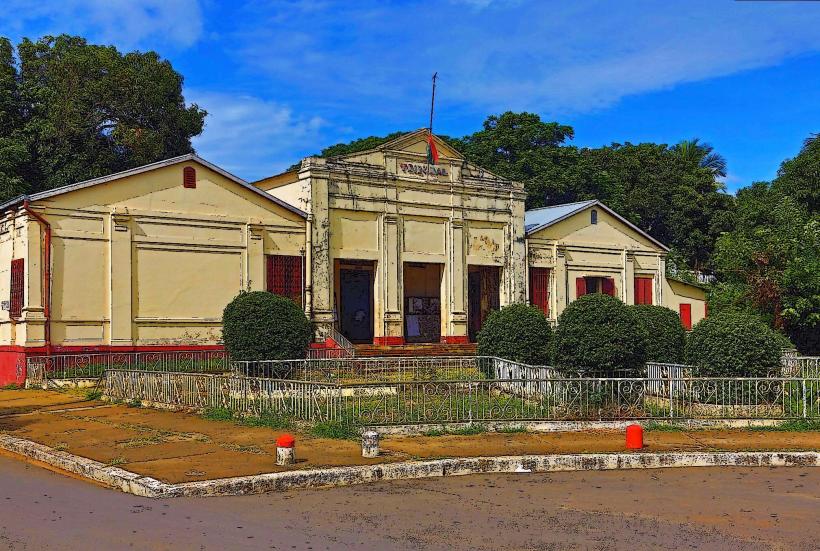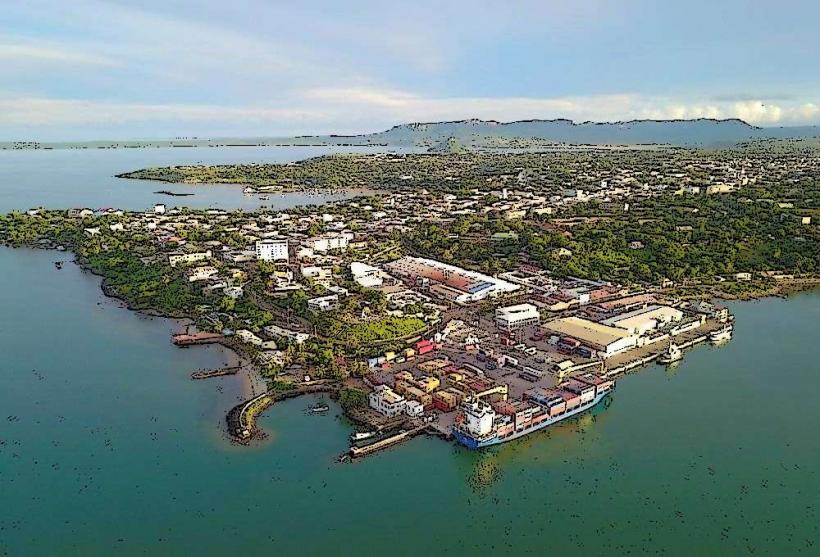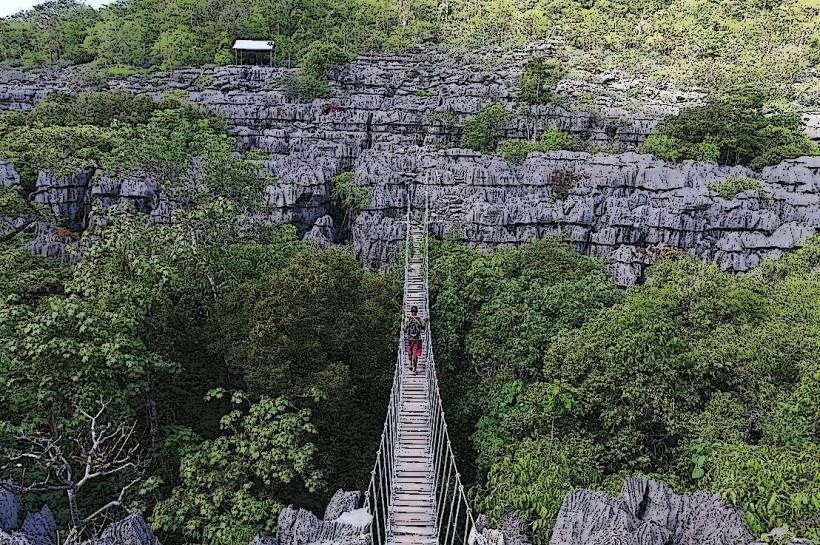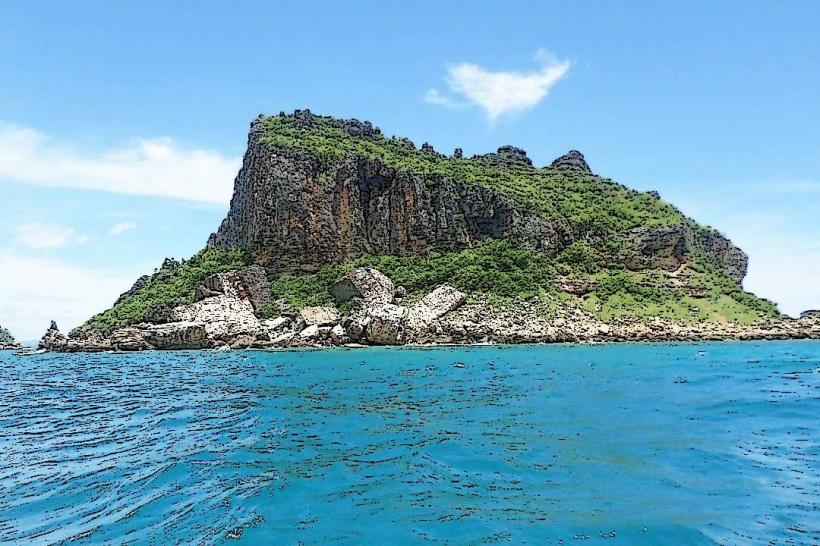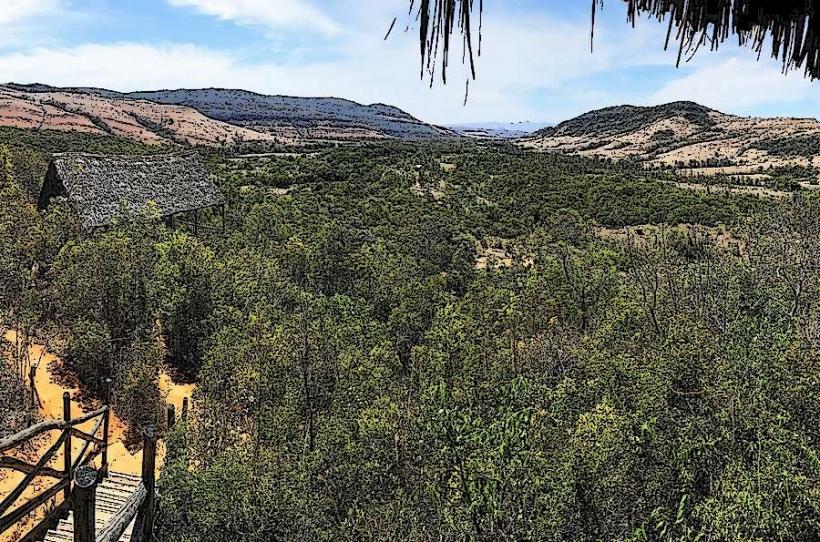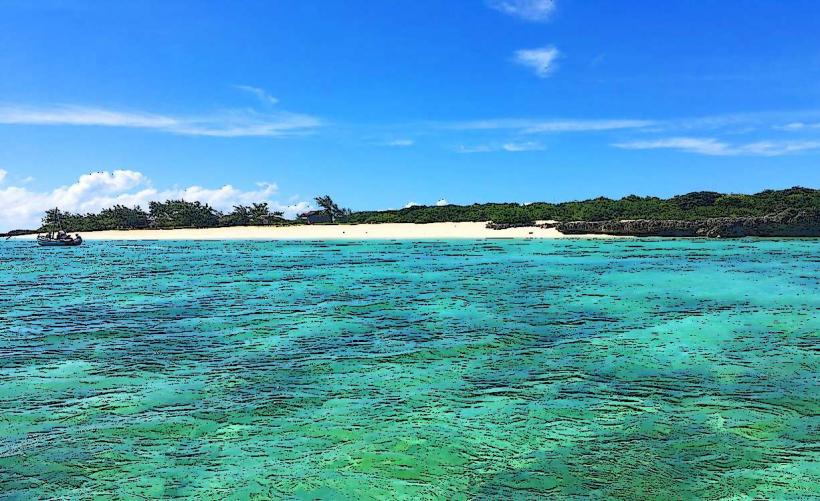Information
Landmark: Tsingy RougeCity: Antsiranana
Country: Madagascar
Continent: Africa
Tsingy Rouge, located in the north of Madagascar, is a unique and visually striking geological formation and natural wonder. It is part of the Tsingy Rouge National Park in the Sofia Region and is known for its incredible red-hued limestone formations, which create an otherworldly landscape. Here's a detailed look at Tsingy Rouge:
1. Location and Accessibility
Tsingy Rouge is situated approximately 60 kilometers (37 miles) southeast of the town of Antsiranana (formerly Diego Suarez), in the far north of Madagascar. The park can be reached by car from Antsiranana, but the journey takes several hours over rough, unpaved roads, so a four-wheel-drive vehicle is essential.
The site is relatively remote, making it less visited than other tourist attractions in Madagascar, which helps maintain its pristine environment. However, due to its growing recognition, Tsingy Rouge has slowly started to gain attention from eco-tourists and geology enthusiasts.
2. Geological Formation
The "Tsingy" term in Malagasy refers to jagged limestone formations that are shaped by centuries of erosion. However, the formations at Tsingy Rouge differ from the more famous Tsingy de Bemaraha in the central-western part of the island.
- Tsingy Rouge's distinctive feature is the red-colored limestone, which results from a combination of the natural rock's mineral composition and the erosion process. The cliffs and spires are predominantly made of sandstone and clay, but the presence of iron oxides gives the formations their striking red color, making the site appear like a “forest of stone” bathed in hues of deep red and orange.
- The formations themselves are relatively small and more compact compared to other Tsingy sites, but they create a dramatic and surreal landscape.
3. History and Erosion Process
The formation of Tsingy Rouge began millions of years ago during the Miocene and Pliocene epochs, when the area was submerged underwater. Over time, the land emerged from the sea and was shaped by natural forces, particularly wind, water, and temperature fluctuations.
- The red color comes from the rich iron content in the sedimentary rocks, which, over time, have been oxidized by rainfall and wind erosion.
- The sharp, needle-like spires and pinnacles that define the Tsingy Rouge landscape were gradually carved out as softer materials were eroded away, leaving behind the harder red sandstone structures.
4. Ecological Importance
While the geological formations are the main attraction, the area surrounding Tsingy Rouge also harbors an array of biodiversity, including endemic flora and fauna. However, the region is more arid compared to other parts of Madagascar, and the ecosystem is adapted to the dry conditions.
- Flora: The vegetation around Tsingy Rouge consists of dry forest, with species such as baobabs, spiny forests, and drought-resistant plants.
- Fauna: The area is home to various species of birds, reptiles, and insects that have adapted to the dry environment. Lemurs are also found in the broader region, though the park itself is not as well known for its wildlife compared to other sites in Madagascar.
5. Activities and Attractions
Tsingy Rouge is not just a geological wonder, but it also offers several activities for visitors:
- Hiking and Exploration: There are trails that visitors can follow through the formations, allowing them to explore the various spires and pinnacles up close. The paths are typically not too strenuous, but visitors should be prepared for uneven terrain and some steep areas.
- Photography: The vivid red and orange hues of the rock formations, especially during sunrise or sunset, make Tsingy Rouge a fantastic location for photography.
- Guided Tours: While the park is not as developed for mass tourism, local guides are available to lead visitors through the formations, offering insight into the geology and history of the area.
6. Conservation and Challenges
As with many unique natural sites, conservation efforts are essential to protect Tsingy Rouge from environmental degradation. The area is relatively remote, which limits human intervention, but challenges such as climate change, deforestation, and overgrazing by livestock from nearby communities can still pose threats to the ecosystem.
Local authorities and conservation groups are working to ensure that the area remains protected while balancing the needs of surrounding communities and the growing interest in eco-tourism.
7. Best Time to Visit
The best time to visit Tsingy Rouge is during the dry season, from April to October, when the weather is cooler, and the roads are more accessible. During the wet season (November to March), the region experiences heavy rains, making travel more difficult and some trails slippery.
8. Cultural Significance
While Tsingy Rouge is primarily recognized for its natural beauty, the surrounding area is also home to local communities that have lived in this region for centuries. The local Malagasy people, especially the Sakalava and Antakarana tribes, have cultural ties to the land, and their traditional practices may include farming and animal husbandry in the surrounding areas.
Conclusion
Tsingy Rouge is one of Madagascar's hidden gems, offering a unique geological landscape that sets it apart from the island's more famous Tsingy sites. The dramatic red formations, combined with the area's ecological diversity, make it a must-see for those interested in natural wonders and eco-tourism. While the site is remote and not as developed for tourism, it offers a peaceful, almost mystical experience for visitors who make the effort to explore its stunning red cliffs and spires.

